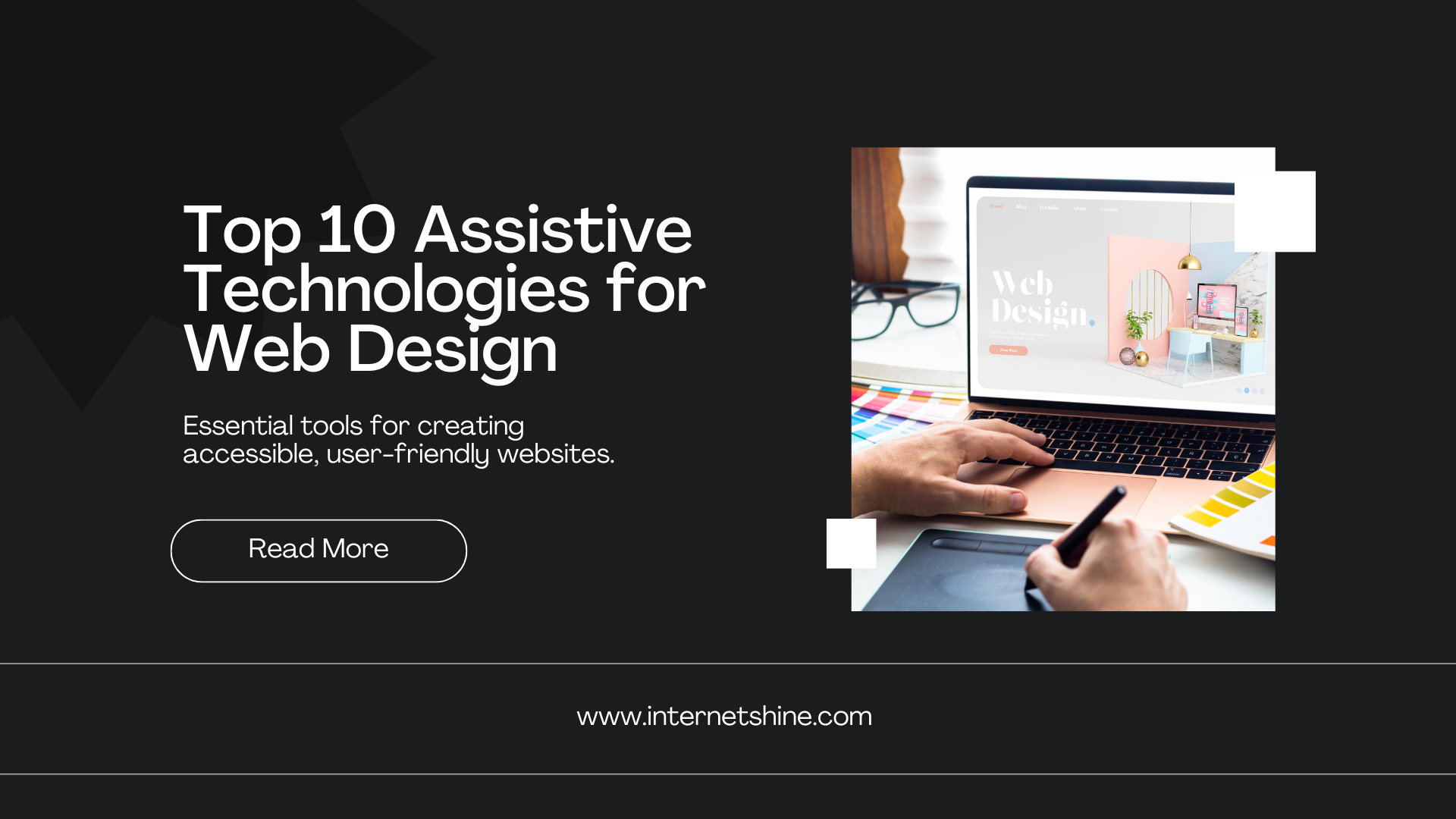Top 10 Assistive Technologies for Web Design
In today’s digital age, inclusivity in web design is more critical than ever. Assistive technologies are tools and software designed to help individuals with disabilities navigate and interact with websites. Integrating these technologies into web design ensures that everyone, regardless of their abilities, can access information and services online. Here are the top 10 assistive technologies that can enhance web accessibility and user experience.
1. Screen Readers
Screen readers are essential tools for visually impaired users, converting text and other on-screen elements into speech or Braille. Popular screen readers like JAWS (Job Access With Speech) and NVDA (NonVisual Desktop Access) allow users to navigate websites using keyboard shortcuts, making digital content accessible to those who cannot see the screen.
2. Voice Recognition Software
Voice recognition software, such as Dragon NaturallySpeaking, enables users to control their computers and input text using voice commands. This technology is particularly beneficial for individuals with mobility impairments or conditions that make typing difficult. By integrating voice recognition compatibility into web design, developers can create more accessible and user-friendly websites.
3. Alternative Input Devices
Alternative input devices, such as adaptive keyboards, eye-tracking systems, and switch devices, provide users with physical disabilities alternative ways to interact with computers. These devices can be customized to meet the specific needs of each user, ensuring that they can navigate websites and access digital content effectively.
4. Screen Magnifiers
Screen magnifiers enlarge text and images on the screen, making them easier to see for users with low vision. Tools like ZoomText and MAGic provide adjustable magnification levels and enhance readability by improving contrast and cursor visibility. Incorporating compatibility with screen magnifiers in web design helps ensure that content is accessible to users with visual impairments.
5. Text-to-Speech (TTS) Software
Text-to-speech (TTS) software converts written text into spoken words, assisting users with reading difficulties, visual impairments, or learning disabilities. Tools like NaturalReader and Balabolka allow users to listen to written content, improving comprehension and accessibility. Integrating TTS functionality into websites can enhance the user experience for a broader audience.
6. Closed Captioning and Subtitles
Closed captioning and subtitles provide textual representations of audio content, making videos and multimedia accessible to deaf or hard-of-hearing users. By including captions and subtitles in video content, web designers can ensure that all users can access and understand the information being presented.
7. Keyboard Navigation
Keyboard navigation allows users to interact with websites using only the keyboard, which is essential for individuals with motor disabilities who cannot use a mouse. Ensuring that all interactive elements on a website are keyboard accessible and providing clear focus indicators improves usability for keyboard-only users.
8. High Contrast Modes
High contrast modes enhance the readability of text by increasing the contrast between the text and background. This feature is beneficial for users with visual impairments, color blindness, or other visual challenges. By offering a high contrast mode option, web designers can make their sites more accessible to these users.
9. Responsive Design
Responsive design ensures that websites are accessible and functional on various devices and screen sizes. This approach is crucial for users who rely on mobile devices or tablets for internet access. Implementing responsive design principles, such as flexible grids and scalable images, enhances accessibility and provides a seamless user experience across all devices.
10. Accessibility Testing Tools
Accessibility testing tools, such as WAVE (Web Accessibility Evaluation Tool) and Axe, help web designers identify and fix accessibility issues on their websites. These tools provide detailed reports on accessibility errors and offer recommendations for improvements, ensuring that websites comply with accessibility standards and guidelines.
Conclusion
Incorporating assistive technologies into web design is essential for creating inclusive and accessible websites. By leveraging these top 10 assistive technologies, web designers can ensure that their digital content is accessible to all users, regardless of their abilities. Prioritizing accessibility not only benefits individuals with disabilities but also enhances the overall user experience, making the internet a more inclusive space for everyone.

